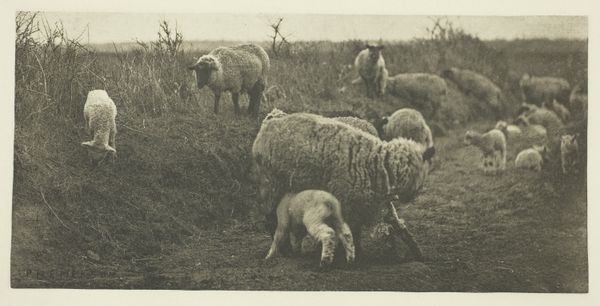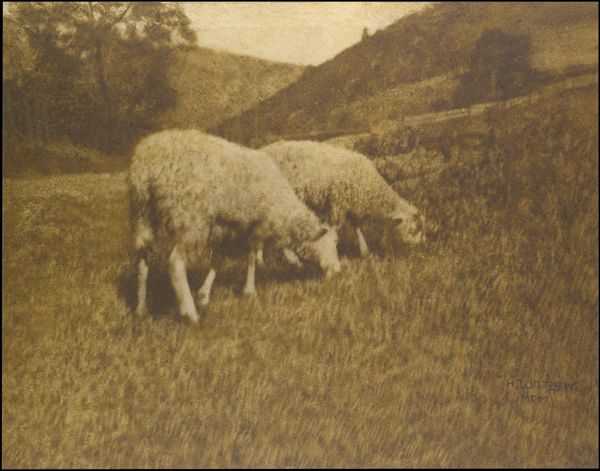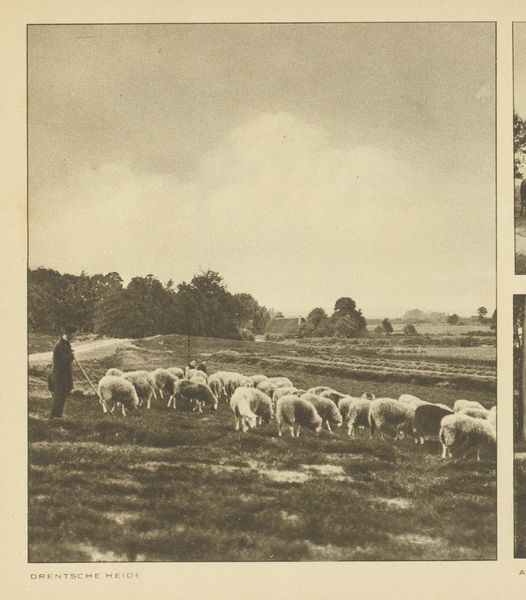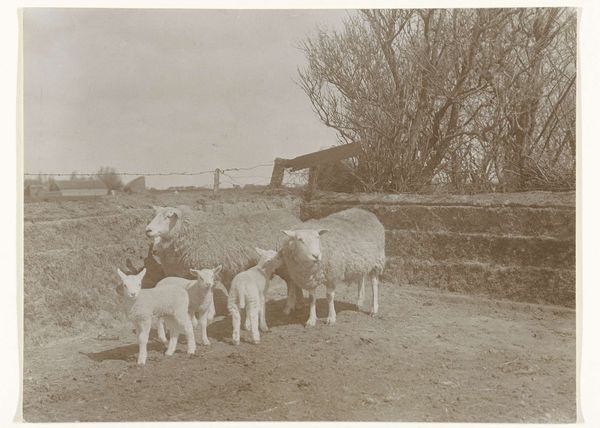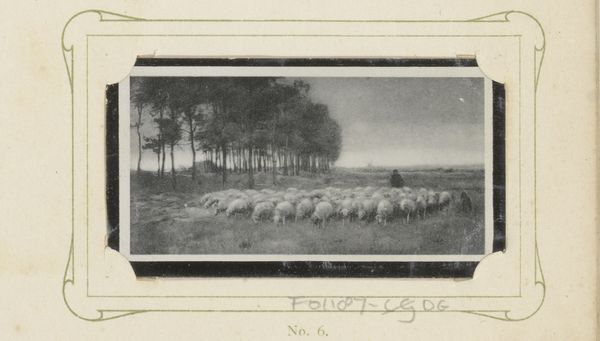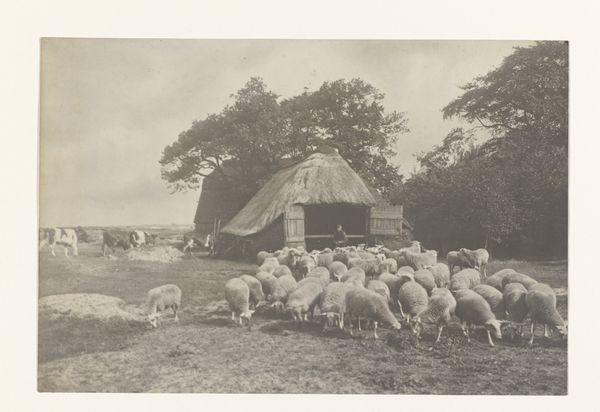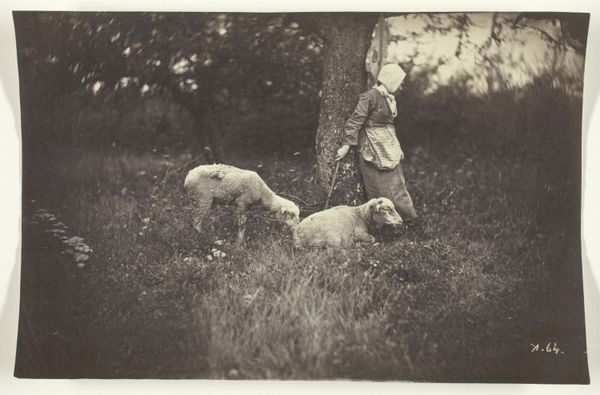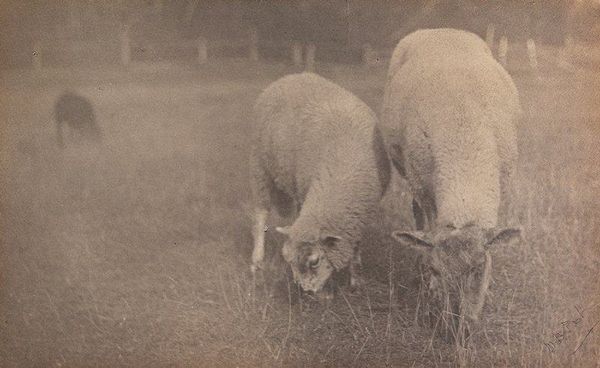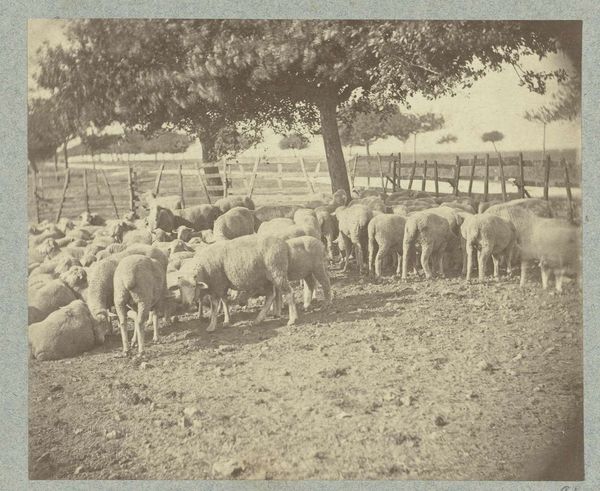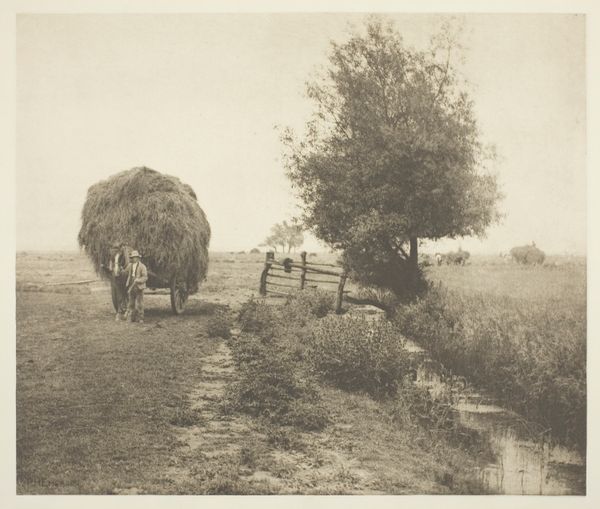
photogravure, photography, gelatin-silver-print
#
still-life-photography
#
photogravure
#
pictorialism
#
impressionism
#
landscape
#
photography
#
gelatin-silver-print
#
realism
Dimensions: 5 x 7 in. (12.7 x 17.78 cm) (image)11 1/16 x 14 7/8 in. (28.1 x 37.78 cm) (mount)
Copyright: Public Domain
Curator: Before us, we have J.B.B. Wellington’s "A Study of Sheep," a gelatin-silver print photogravure dating back to 1890, currently residing here at the Minneapolis Institute of Art. Editor: It’s remarkably pastoral. The muted tones and soft focus lend it an almost dreamlike quality. There's a real sense of calm, wouldn't you agree? Curator: Absolutely, though I wonder if that calm masks a deeper reading. Think about the context: late 19th-century England, anxieties about industrialization and urbanization running high. Doesn't this idyllic scene read almost as a pointed, nostalgic vision of a rapidly disappearing rural past? The sheep themselves becoming symbols of innocence amidst the encroaching forces of modernity. Editor: I can appreciate that interpretation, framing the work as a reactionary response to modernization. But I wonder if imposing that level of intentionality on Wellington overlooks his artistic motivations. The Pictorialist movement was burgeoning at the time, prioritizing aesthetic beauty and artistic expression through photography. Is it possible Wellington simply aimed to create a beautiful, impressionistic rendering of a familiar scene? A celebration of light and texture through the medium of photography, pushing its boundaries as an art form? Curator: A valid point, but Pictorialism itself can be seen as a response, right? Elevating photography to the level of painting, in defiance of its perceived status as a mere mechanical recording device. The very act of choosing this scene, this subject matter, already implies a certain value judgment. And look closer; those sheep are clustered, almost blindly following one another, could that represent commentary about society at large? Editor: You are giving a voice to the animals. But it might not necessarily mean the statement is about gender, race, or politics. Sometimes a sheep is just a sheep. Still, the power of art is that it sparks conversation, no? Curator: Precisely, and this photograph, consciously or unconsciously, speaks volumes about its time and potentially still has some statements about ours. Editor: Well, it definitely has me contemplating my carbon footprint after all that talk about sheep.
Comments
No comments
Be the first to comment and join the conversation on the ultimate creative platform.
